ChatGPT-5 has finally been released. Now we are seeing articles popping up all over the web, but there are no articles that focus on Data Analysis.
In this one, let’s focus on the data analysis purely and curate GPT-5 prompts that will turn you into a high-level data analyst in seconds.
Stock Market Dataset for August 2025
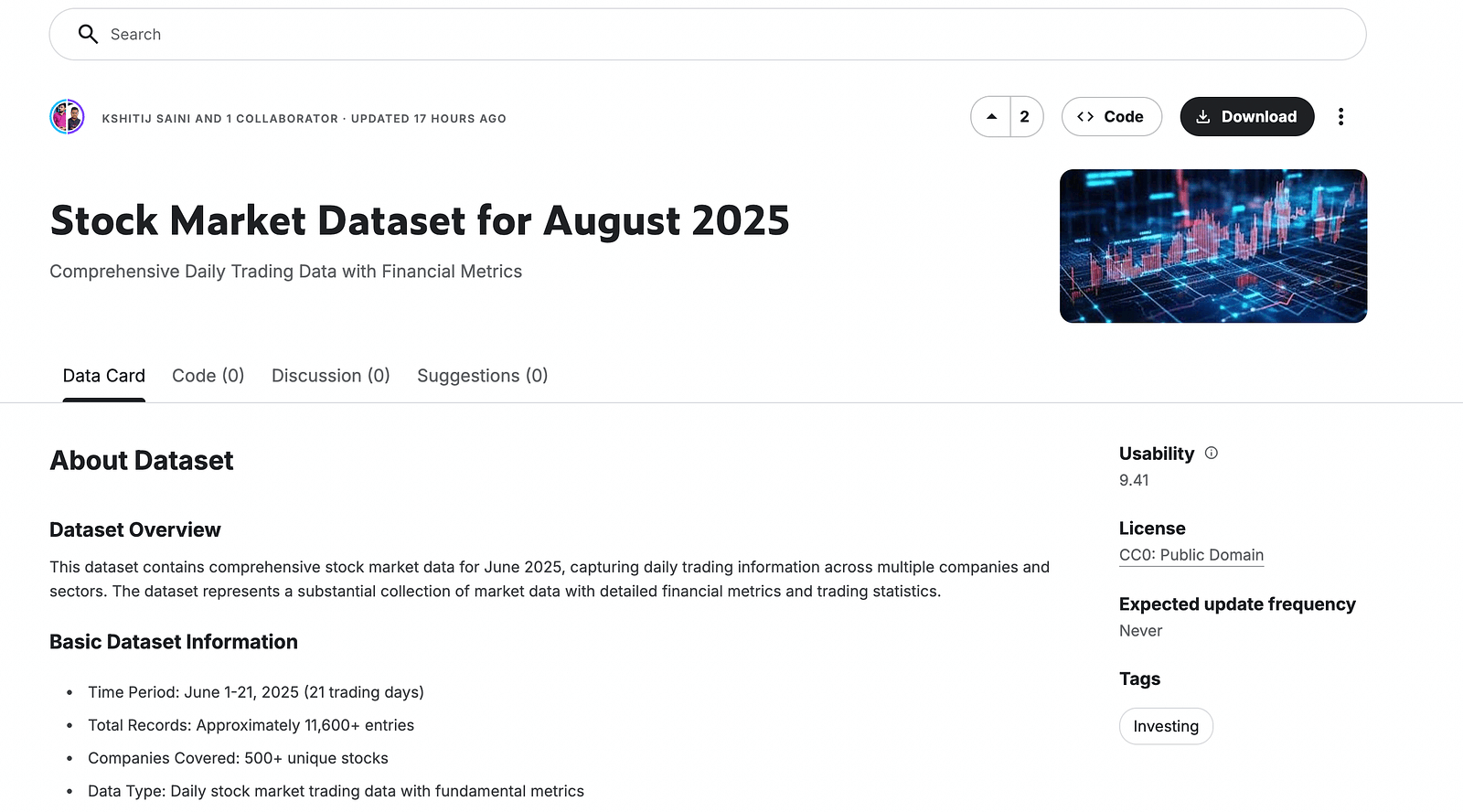
Stock Market Dataset: Reference
To test GPT-5, we will use the Stock Market Dataset from Kaggle. Here is the link.
Usually, we can check the head/tail or describe the dataset before sending it to the GPT-5. But now, you don’t have to do more; just upload the dataset to GPT-5 and start Data Exploration.
Data Exploration
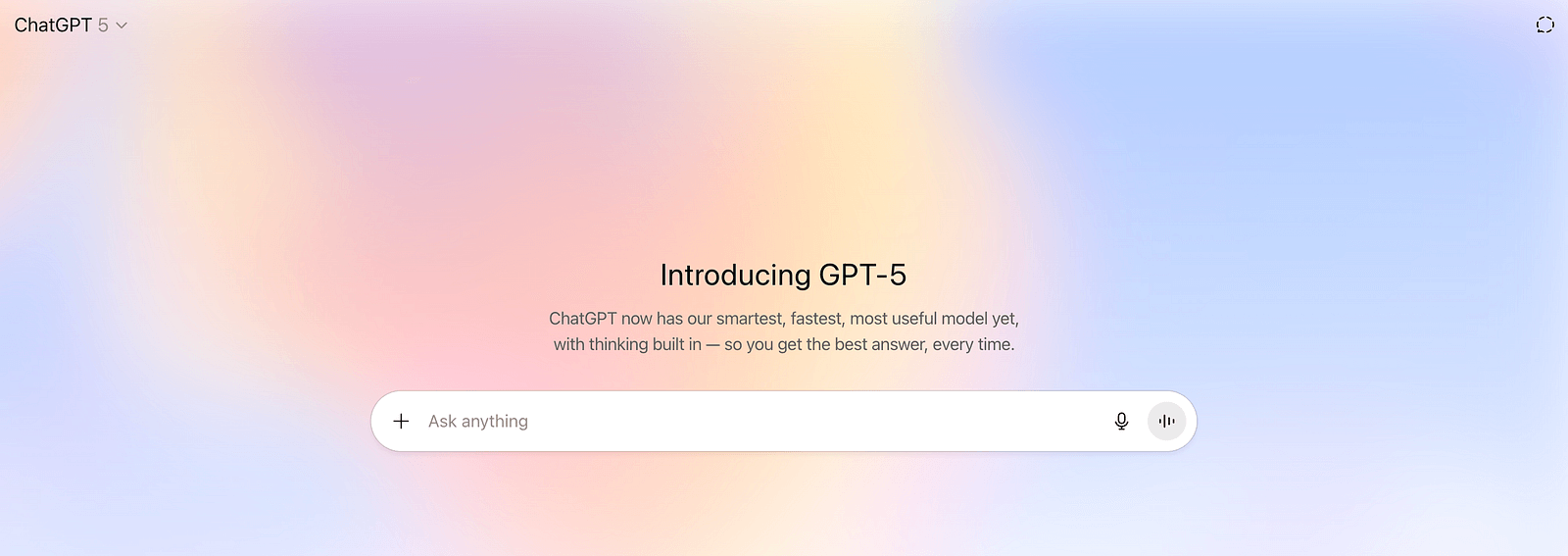
GPT-5 has been released, and let’s do data exploration with it — SS of it.
We will start by doing data exploration as usual. To automate data exploration, let’s use this prompt. Use the attached dataset to perform comprehensive data exploration.
Use the attached dataset to perform comprehensive data exploration.
Your steps should include:
1. Identify the structure of the dataset (columns, data types, missing values, etc.).
2. Summarize key statistics for each feature (mean, median, std, unique counts).
3. Detect outliers and missing data patterns.
4. Visualize distribution for numerical columns and frequency for categorical ones.
5. Explore correlations and highlight interesting relationships.
6. Suggest relevant questions to ask based on the dataset topic.
7. Recommend data cleaning or transformation steps if needed.
8. Provide a brief summary of findings.
9. If the dataset includes a target variable, analyze its relationship with other features.
10. Adjust your exploration based on the dataset’s topic and column types (e.g., time-series, categorical-heavy, text, etc.).
Output your analysis in a structured and readable format using code (Python with pandas, seaborn, matplotlib if applicable).
Here is the output.
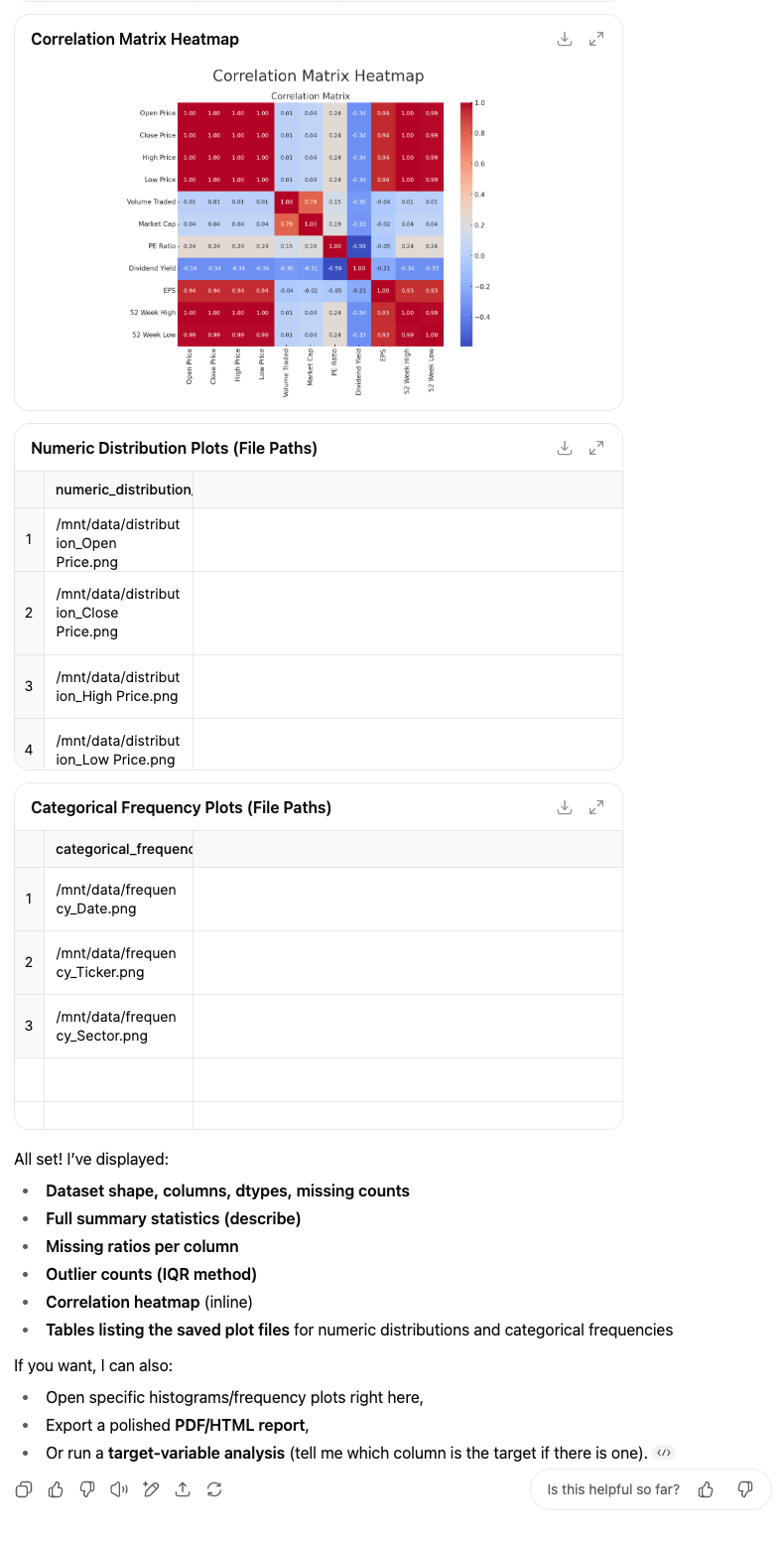
Initial data analysis
Do you see bugs in here? Some of the images are presented as images in the table, so let’s build a dashboard instead.
Building a Data Exploration Dashboard with GPT-5
Now, usually, we would have stopped here, but with GPT-5, you can build and see this dashboard in Canvas!
You don’t need to create or run a script on your local machine; GPT-5 can handle it for you.
Build a dashboard by using React/JS that automates this data exploration we did.
And the process has started now.
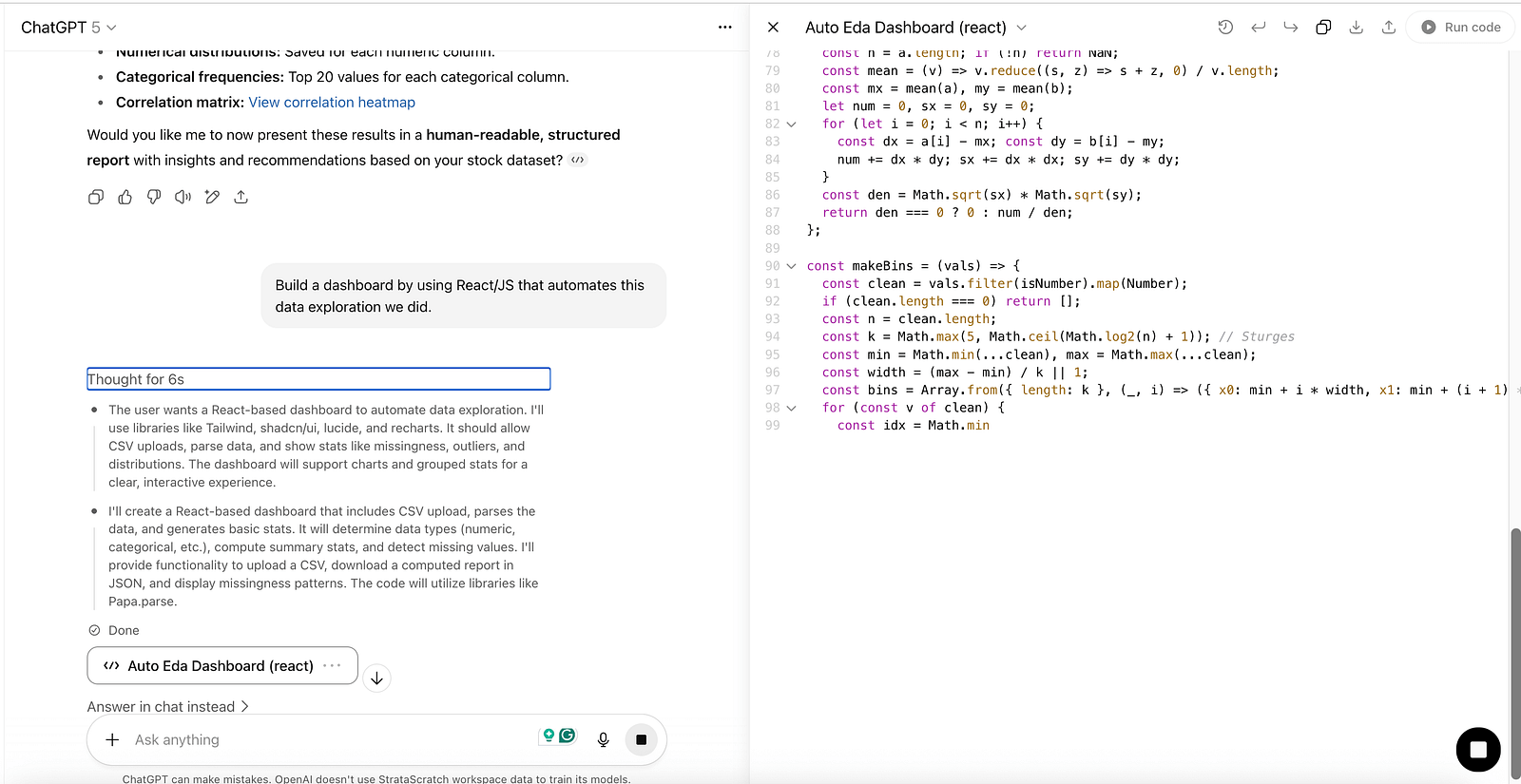
Data Exploration Dashboard with React- GPT 5
And it has built a 400+ line dashboard now.
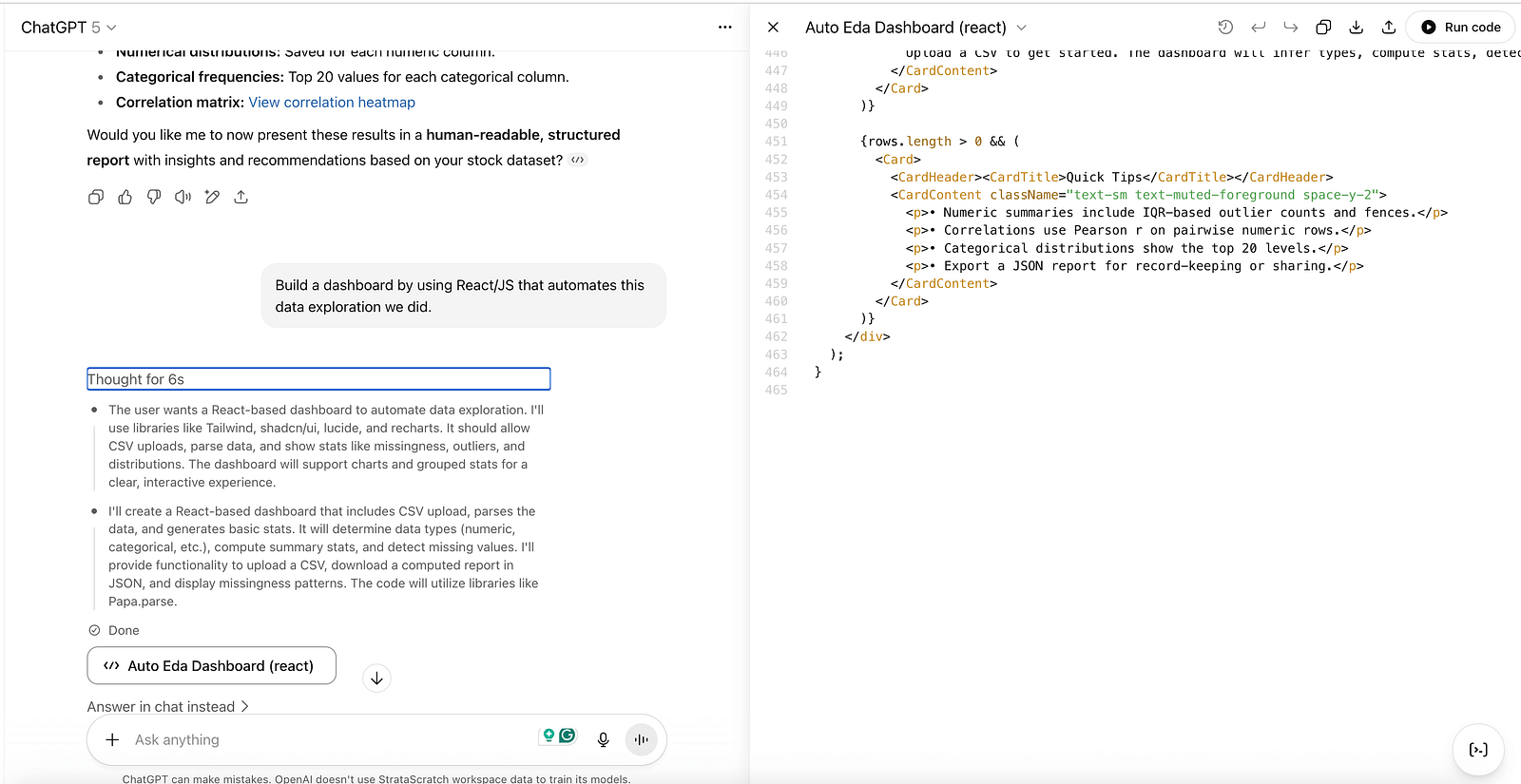
Dashboard is ready!
Now you should click on the “Run Code” from the top right, and voila!
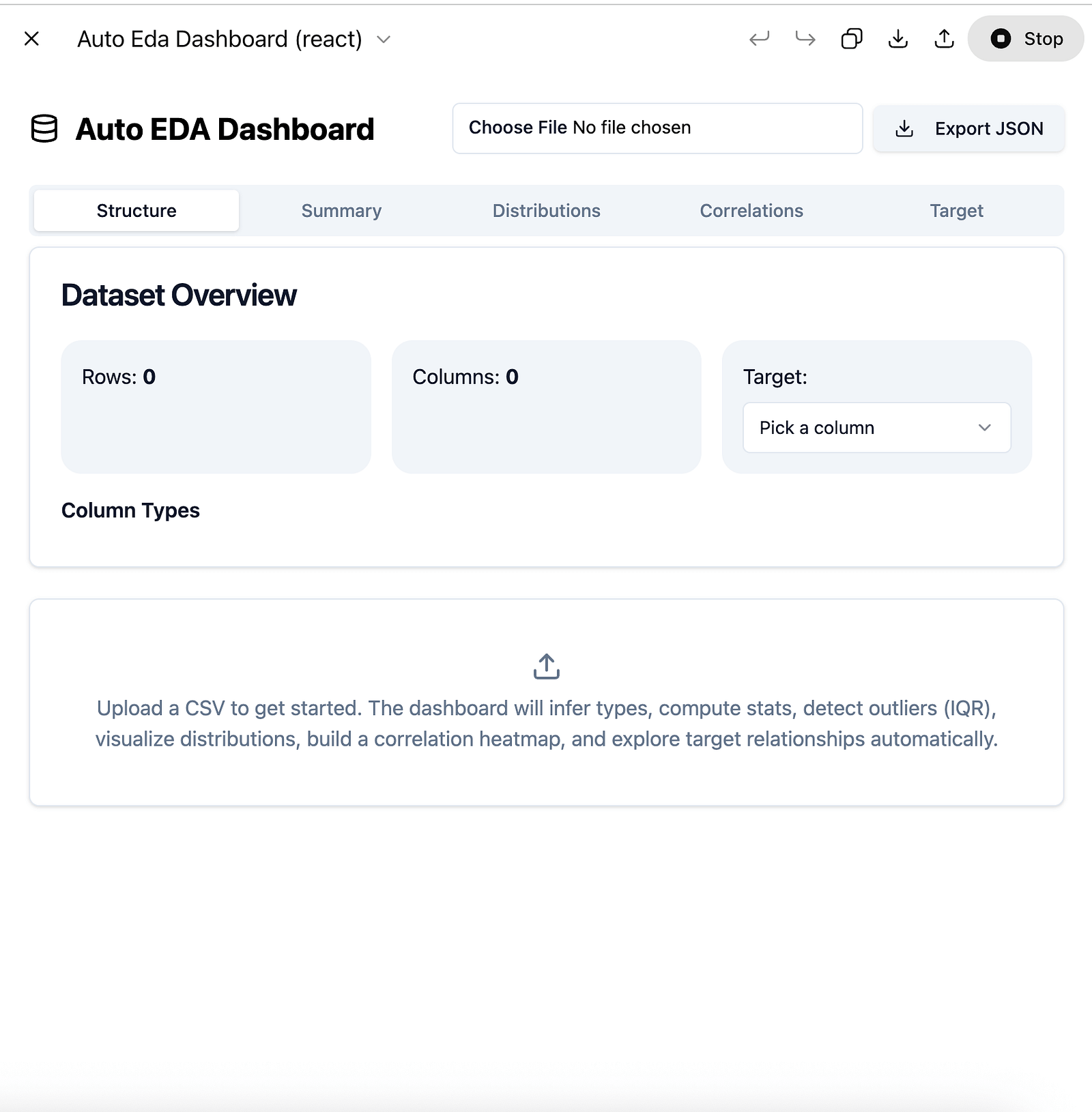
EDA automation dashboard
Your dashboard is ready, now let’s upload the dataset to it by clicking on the “Choose File” and here is the result.
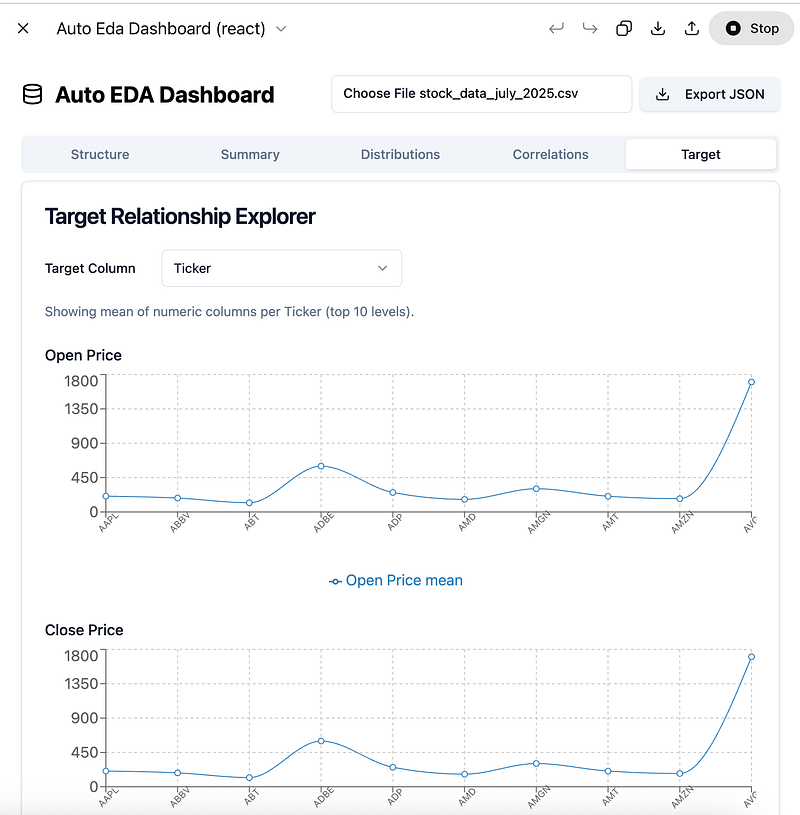
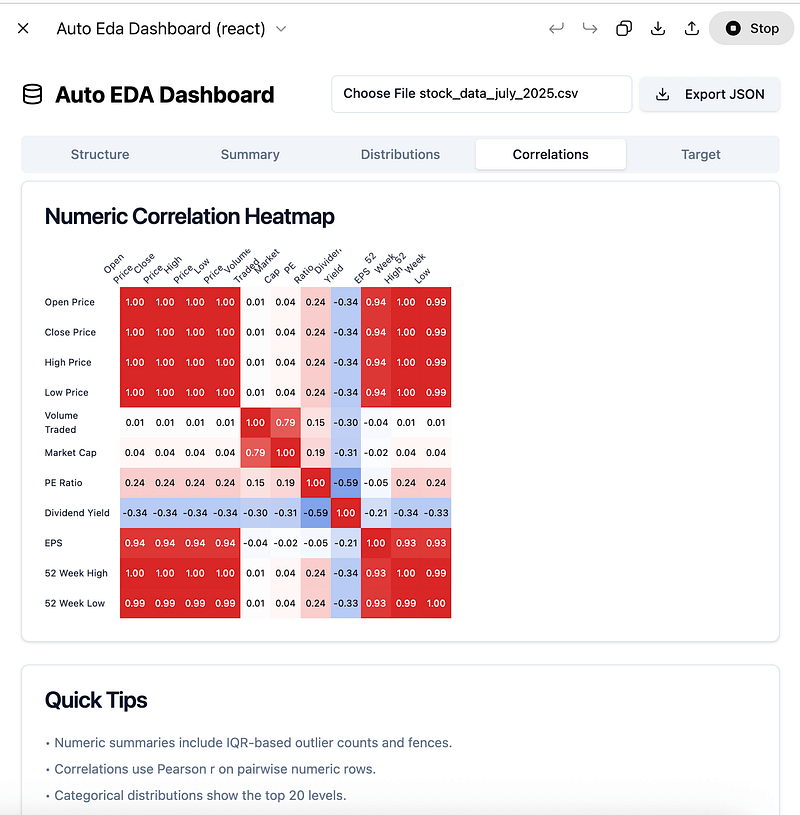
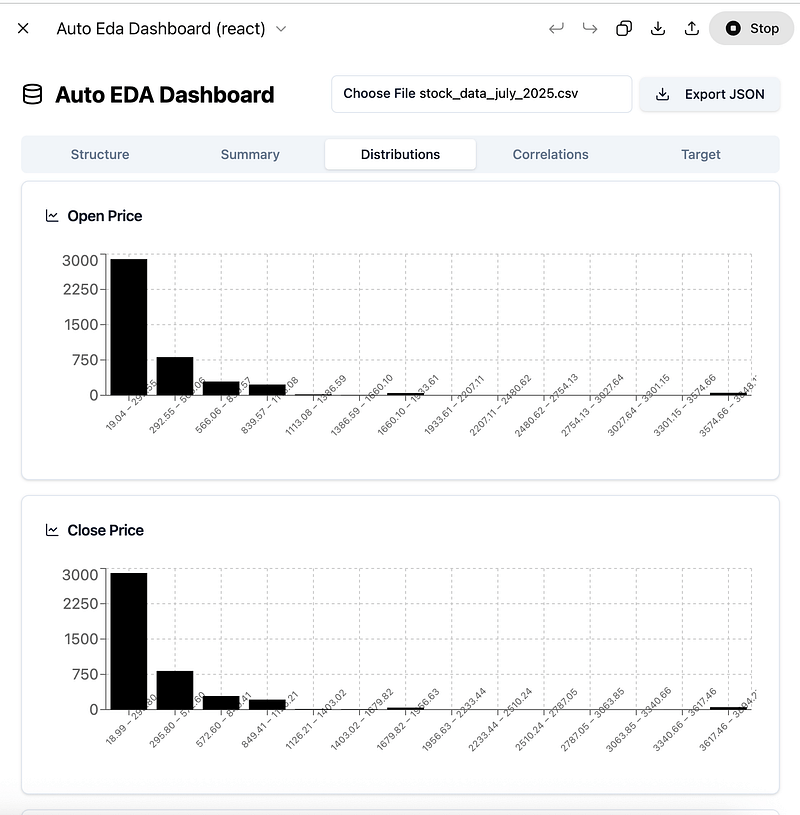
Data Exploration Dashboard
What’s next?
Next, you can build a dashboard to develop a machine learning algorithm by tweaking its parameters. Another great idea is to check the artifacts on Claude and get an idea from there.
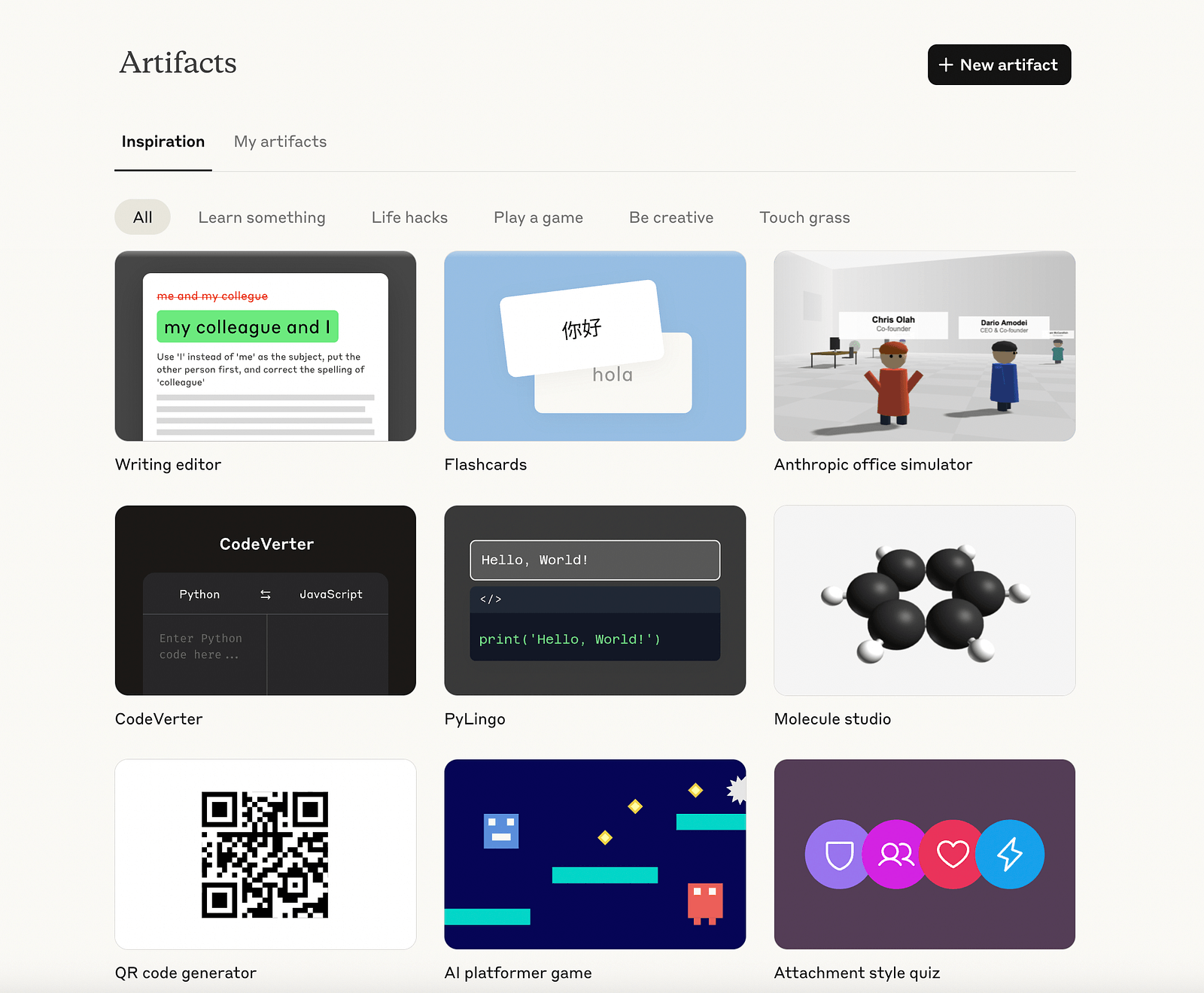
Here you’ll see the initial prompt.
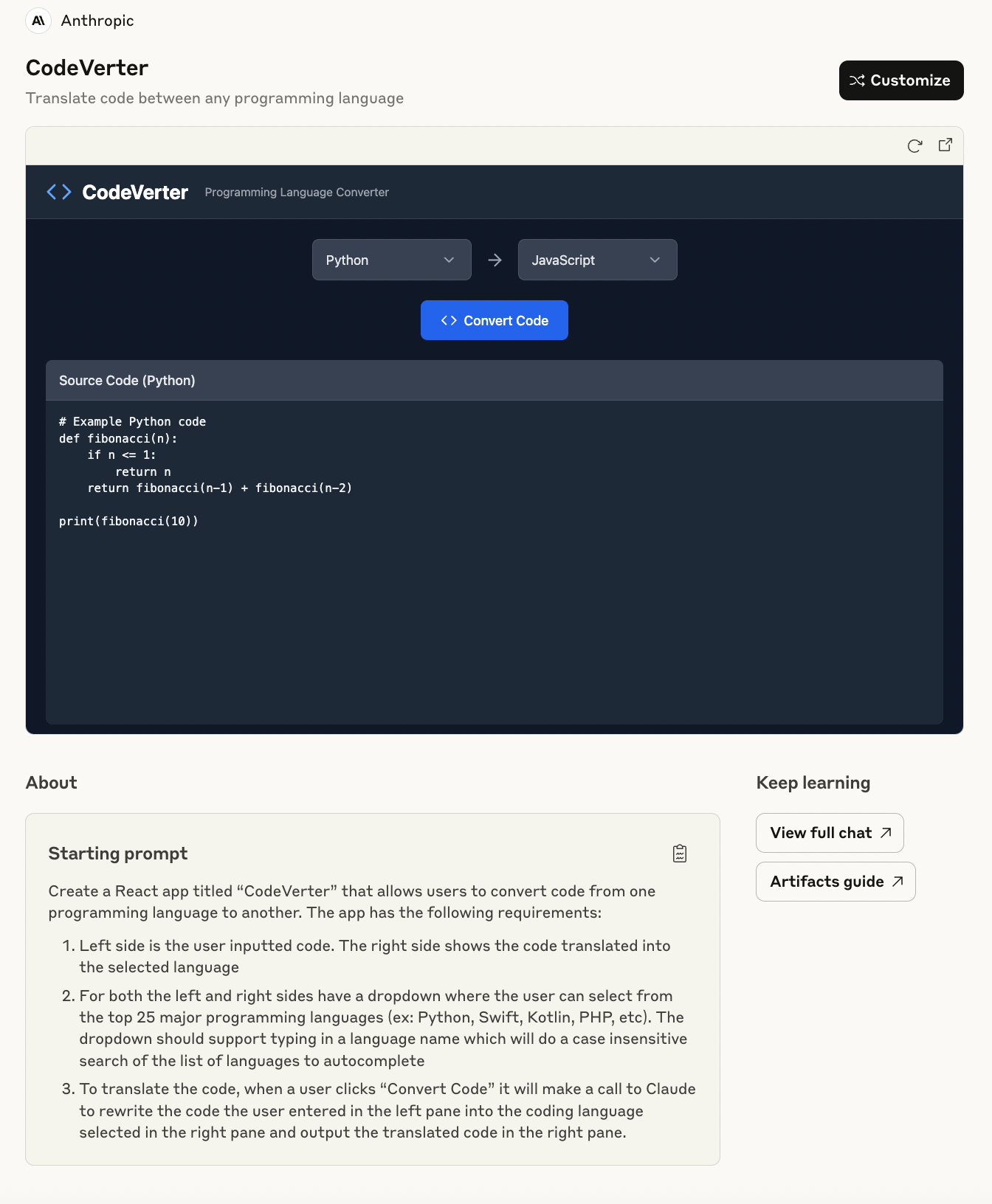
Copy this starting point prompt and send it to the GPT-5. You might encounter errors similar to those shown in the screenshot below.

Fixing bug — GPT 5
But after clicking on the “Fix bug” it will solve the Error for you and you just continue vibe-coding.
Final Thoughts
In this one, we have explored the best prompts to use with GPT-5 to get ahead of other data analysts, where you can build a dashboard by just writing prompts.
If you want me to send the AI Builders Playbook, subscribe to me on my Substack here.
“Machine learning is the last invention that humanity will ever need to make.” Nick Bostrom
📧 Stay Updated with AI Insights
Join 10,000+ subscribers getting the latest AI, Data Science, and tech insights delivered to your inbox.
💡 No spam, unsubscribe anytime. We respect your privacy.
